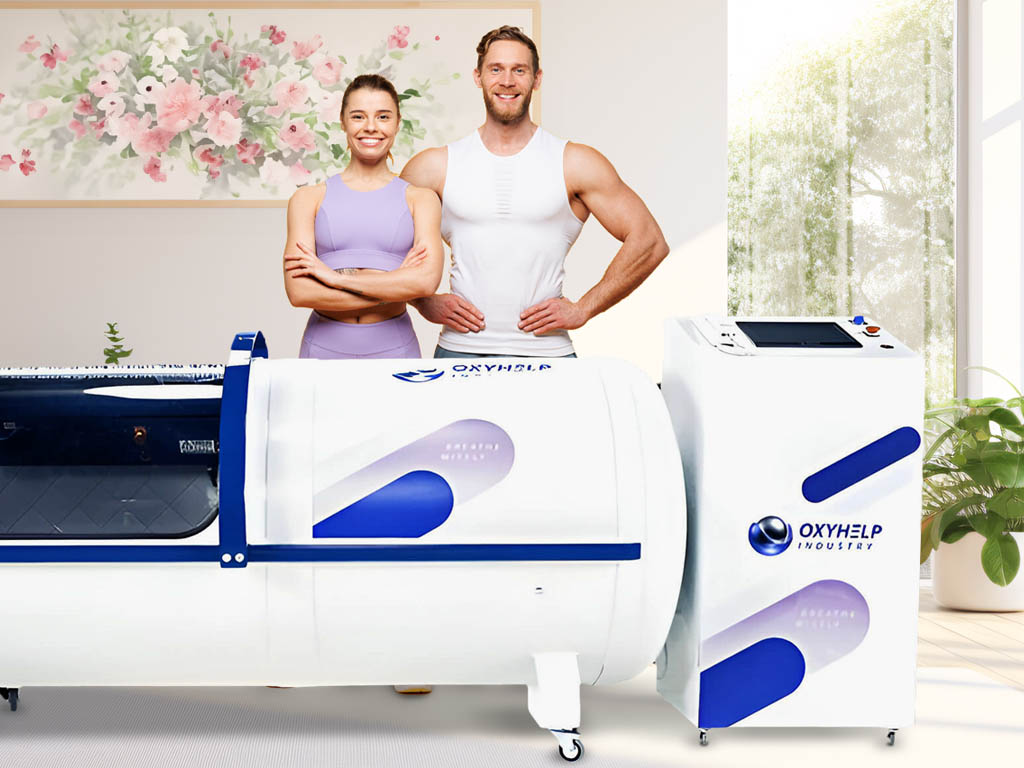Oxygen is the life force that fuels our cells and tissues, but what if we could supercharge this process? Mild hyperbaric oxygen therapy, involving exposure to elevated atmospheric pressure and increased oxygen concentration, offers a promising avenue for enhancing cellular metabolism and treating various conditions. In this comprehensive review, we delve into the mechanisms and effects of mild hyperbaric oxygen therapy, shedding light on its potential for improving health.
Understanding Oxygen in Blood
Before we explore the benefits of mild hyperbaric oxygen, it’s essential to grasp the role of oxygen in our bloodstream. Oxygen can either be bound to hemoglobin in red blood cells or dissolved directly in blood plasma. The latter, known as “dissolved oxygen,” is especially critical for peripheral cells, including those in the brain, heart, and eyes, as it can reach even the narrowest capillaries with ease.
Elevating Oxygen Content
Enhancing atmospheric pressure and oxygen concentration increases the oxygen content in the body, particularly the dissolved oxygen in blood plasma. Mild hyperbaric oxygen therapy, performed at 1266–1317 hPa with 35–40% oxygen, has shown tremendous potential in improving oxidative metabolism without causing harm like barotrauma or excessive reactive oxygen species production.
Metabolic Syndrome and Lifestyle-Related Diseases
Experimental studies have demonstrated that mild hyperbaric oxygen therapy can inhibit and improve metabolic syndrome and related conditions like type 2 diabetes and hypertension. It achieves this by boosting oxidative metabolism, which is often lower in affected individuals. This therapy has also been found to elevate levels of peroxisome proliferator-activated receptor γ coactivator-1α (Pgc-1α) mRNA, a key player in oxidative metabolism regulation.
Type 2 Diabetes Management
For individuals with type 2 diabetes, exposure to mild hyperbaric oxygen has proven remarkable. It reduces blood glucose, HbA1c, and triglyceride levels, common issues in diabetes. This therapy increases oxidative capacity in the skeletal muscle and promotes the expression of crucial genes involved in oxidative metabolism, like Pgc-1α and myogenin.
Hypertension Control
In hypertensive rats, mild hyperbaric oxygen therapy has lowered both systolic and diastolic blood pressure. This reduction in blood pressure is attributed to decreased oxidative stress and increased antioxidant levels. By enhancing oxidative metabolism, this therapy increases carbon dioxide concentration, facilitating blood flow in vessels.
Hypertension Control
Arthritis often leads to overproduction of reactive oxygen species, causing oxidative stress and inflammation. Mild hyperbaric oxygen therapy effectively reduces reactive oxygen species levels and improves oxidative stress markers in arthritic individuals.
Skin Rejuvenation
Skin aging comes with several challenges, including dehydration and decreased cell proliferation. Exposure to mild hyperbaric oxygen has been shown to boost the proliferation of epidermal basal cells, potentially rejuvenating aged skin. It can also fade pigmentation induced by factors like ultraviolet B irradiation.
Neuromuscular Health
Mild hyperbaric oxygen therapy enhances oxidative metabolism, benefiting both skeletal muscle fibers and the spinal motoneurons that innervate them. This improvement in oxidative capacity leads to increased voluntary activity in growing rats and can counteract age-related muscle atrophy.
Parkinson’s Disease
Parkinson’s disease, characterized by a decline in dopaminergic neurons, has seen promising results with mild hyperbaric oxygen therapy. Exposure to this therapy inhibits the decrease in dopaminergic neurons in Parkinson’s disease, potentially delaying the disease’s progression.
Infertility
Mild hyperbaric oxygen therapy has even shown potential in addressing infertility, both in females and males. A study reported increased clinical pregnancy rates in women with intractable infertility following exposure to mild hyperbaric oxygen.
Conclusion
Exposure to mild hyperbaric oxygen holds promise for diverse populations, from the elderly and physically challenged to athletes recovering from injuries. Future research may unveil its potential in preventing dementia, addressing autonomic nerve imbalances, maintaining immunity, and promoting overall health and fitness.
In conclusion, the intriguing world of mild hyperbaric oxygen therapy opens up new avenues for improving health and addressing a myriad of conditions. By enhancing oxidative metabolism and optimizing cellular functions, this therapy could be the key to unlocking better well-being for many. Further studies are needed to refine protocols and harness its full potential.
Source
Ishihara, A. (2019 May 6). Mild hyperbaric oxygen: mechanisms and effects. The Journal of Physiological Sciences. https://jps.biomedcentral.com/articles/10.1007/s12576-019-00678-5












